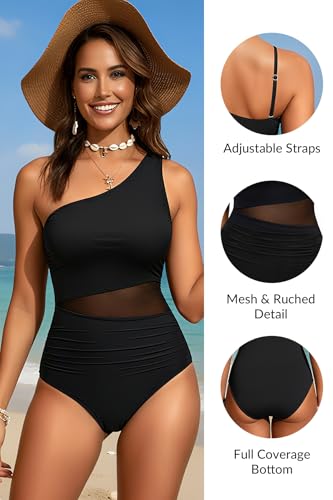Summary: Discover “Should You Wash Your Swimsuit After Every Use?” as well as easy-to-follow tips on how to extend the lifespan of your favorite bathing suits
Washing your swimwear after every use is crucial for maintaining its condition and hygiene.
Do you ever find yourself purchasing a new swimsuit, wearing it to the beach once, and in just a couple of weeks it’s stretched out, faded, or sagging?

Many people assume that if they don’t swim in chlorinated pools or saltwater, washing it isn’t necessary.
This belief can damage the material and possibly cause hygiene issues.
Even limited exposure to body oils, sweat, and sunscreen affects the fabric’s integrity and cleanliness.
Chlorine and salt will break down the delicate fabrics, while body oils and lotions cause the material to degrade over time.
This not only shortens the lifespan of your suit but can also lead to skin irritation or infections.

It’s essential to wash your swimsuit after each wear.
You really want a long-lasting swimsuit.
This article will explore the importance of regular care, debunk common misconceptions, and provide practical tips for maintaining your swimwear in top condition.
Table of Contents
The Necessity of Washing Swimsuits Regularly
Washing your swimsuit after every use is not just a good practice; it’s essential for maintaining its quality and your health.
The reality is that swimsuits absorb not just water but also body oils, sweat, and sunscreen.
These substances will damage the fabric over time.
Chlorine, found in pools, is particularly harsh on swimwear. They break down the fibers, causing the suit to lose its shape and color.
Saltwater, too, has a similar effect, eroding the material gradually.
Even if you’re just lounging in the sun, lotions and oils will seep into the fabric, affecting its elasticity.
The consequences go beyond wear and tear.
A damp swimsuit is a breeding ground for bacteria and mold, which in turn leads to skin irritations, infections, and an unpleasant odor.
For example, a study found that unwashed swimwear can harbor bacteria like E. coli, which poses a significant health risk.

So, it’s crucial to wash your swimsuit after each use.
This doesn’t mean a heavy wash every time; a gentle rinse in cool water with mild soap is often enough to remove harmful substances and keep your suit in good condition.
Also, avoid wringing it out, as this can stretch the fabric. Instead, gently squeeze out the water and lay it flat to dry.
Regular washing is vital for both the longevity of the garment and your health.
? Rotate between a few swimsuits to reduce wear and tear, giving each suit ample time to dry and regain its shape before the next use.
Should I Wash My New Swimsuit Before Wearing It?
When you purchase a new piece of swimwear, it’s important to consider washing it before its first outing. This practice is advisable for several reasons.

Firstly, new pieces often carry residues from their production, including chemicals used in fabric processing. These substances can cause skin irritation, particularly for those with sensitive skin.
A preliminary wash helps eliminate these potential irritants, ensuring a more comfortable experience when you wear it.
Moreover, these garments in stores might have been tried on by others, leading to the transfer of germs or body oils.
A first wash adds a hygiene factor, safeguarding you from any bacteria that might be present.
This simple step can make a significant difference in both comfort and health, making it a wise routine to adopt for all new swimwear purchases.
Damage Caused by Water Types
The best way to ensure longevity is to understand how different water types affect its fabric.

Don’t be fooled into thinking that swimsuits only need washing if they’re visibly dirty or have been used in chlorinated pools.
This overlooks the damage caused by saltwater and even hot tubs.
Saltwater, often thought to be harmless, can be just as damaging as chlorinated water.
Salt crystals embed themselves in the fabric, causing the material to become dry and brittle over time.
This promotes the loss of elasticity, causing sagging and shape loss.
On the other hand, chlorinated water from swimming pools is notorious for its harsh effects.
The result is a bathing suit that looks worn out and provides less coverage and support.

See this brown bikini on Amazon.
Rinsing in fresh, cool water can help remove salt, chlorine, and other chemicals.
This simple step significantly extends the life of your swimming garment, maintaining its color, shape, and elasticity.
Regardless of whether you swim in the ocean, or a pool, or relax in a hot tub, washing after each use is essential.
? Consider using a specialized swimsuit cleaner or a gentle detergent to provide extra care for your swimwear, ensuring it remains in great condition for your next swim.
Avoid Hot Tubs

Hot tubs, while relaxing, can be harsh on swimwear. The high temperatures and elevated chlorine levels in these tubs are particularly damaging. T
hey break down the fabric’s structure, leading to quicker deterioration. This is especially true for materials like spandex and lycra, commonly used in swimwear.
These fibers are sensitive to heat and chlorine, which can weaken their elasticity, causing the garment to lose its shape and fit.
To protect your attire, it’s advisable to limit hot tub exposure. If you do use a hot tub, consider wearing an older or less favorite piece.

Afterward, a thorough rinse in cool, clean water is crucial to remove chlorine and other chemicals. This step helps in minimizing the damaging effects.
Additionally, consider the impact of lotions and sunscreens. These products often contain ingredients that can react adversely with hot tub chemicals, further harming the fabric.
It’s best to rinse off these products before entering the tub.
Sit on a Towel or Chair if Possible
When enjoying a day at the beach or pool, it’s wise to use a towel or chair whenever sitting down.

Besides comfort, it also plays a crucial role in protecting your swimwear.
Surfaces like sand, pool edges, or even lounge chairs can be rough and abrasive.
Over time, these rough surfaces can cause wear and tear on the fabric of your swimwear, leading to pilling or thinning of the material.
By placing a barrier, like a towel, between the suit and the surface, you reduce direct friction.
This simple step can significantly extend the life of your swimwear, keeping it looking new and fitting well for longer.
Moreover, towels and chairs prevent direct contact with substances that might stain or damage the fabric.
Additionally, this practice is not just beneficial for the durability of your swimwear but also hygiene.
Public surfaces can harbor bacteria or other contaminants. Using a towel or chair minimizes skin contact with these areas, offering an extra layer of protection.
Remember, a little precaution goes a long way in maintaining both the quality of your swimwear and your health.
How to Wash Swimsuits by Hand
To keep your swimsuit in top condition, it’s essential to wash it correctly after each use.

Using a machine washing is too harsh and leads to damage.
Hand washing is the safest and most effective way to clean your swimsuit.
Machine washing, especially with other clothes, can stretch and tear the delicate fabric of swimwear.
The agitation and spin cycles in washing machines are too rigorous for the sensitive materials.
Here’s a step-by-step guide to hand-washing your swimsuit:
✅ Fill a Sink with Cool Water
Use cool or lukewarm water. Hot water can damage the fibers and fade the colors of your swimsuit.
✅ Add a Gentle Detergent
Use a mild, bleach-free detergent specifically designed for delicate fabrics. Avoid using too much detergent, as it can be hard to rinse out and may leave residue on the fabric.
✅ Submerge and Soak
Gently submerge in the water and let it soak for about 15 minutes. This helps to loosen any chlorine, salt, or oils.
✅ Gently Wash
Lightly agitate the water with your hands to distribute the soap. Then, gently rub the fabric together to clean it. Avoid scrubbing too hard, which can stretch or damage the material.
✅ Rinse Thoroughly
Drain the soapy water and rinse under cool running water until all soap suds are gone. Make sure to remove all detergent, as residue can irritate the skin and damage the fabric.
✅ Dry Properly
Avoid wringing out, as this can stretch it. Instead, gently squeeze out the excess water.
Lay it flat on a clean, dry towel, roll the towel up with the swimsuit inside to absorb moisture, and then lay it flat to dry completely out of direct sunlight.
Hand washing is the best way to maintain its shape, color, and overall integrity.
? Avoid hanging to dry, as this can cause it to stretch. Following these steps will ensure your swimsuit stays looking great and lasts longer.
Best Swimsuit Detergent
The key to effective washing lies in choosing the right detergent.

It’s a common belief that any detergent used for regular clothes is suitable for swimsuits.
This is not the case!
Regular detergents are too harsh for the delicate fabric of swimwear, leading to damage and deterioration.
Using a mild detergent is crucial for preserving the integrity of your swimsuit.
Harsh chemicals found in standard detergents can break down the elastic fibers in swimwear, causing them to lose their shape and elasticity.
Mild detergents are specifically formulated to be gentle on fabrics while still effectively removing oils, chlorine, and salt.

They clean without compromising the fabric’s quality.
For those looking for natural alternatives, white vinegar and baking soda are excellent options.
White vinegar is great for neutralizing odors and removing chlorine, while baking soda can gently cleanse the fabric without causing damage.
Here’s how to use these alternatives:
? Wash Swimsuit in Vinegar
Add a tablespoon of white vinegar to a sink of cool water. Soak your swimsuit for about 30 minutes, then rinse thoroughly. Vinegar helps to remove odors and chlorine without harming the fabric.
? Washing Bathing Suits in Baking Soda
Make a paste with baking soda and a little water. Apply this gently to any stains or areas with body oil. After a few minutes, rinse in cool water. Baking soda is effective for gentle spot cleaning.
Choosing a mild detergent or a natural alternative like white vinegar or baking soda is essential for maintaining your swimsuit’s condition.
? Always rinse your swimsuit in fresh water immediately after swimming, even if you plan to wash it later. This helps to remove most of the harmful substances and reduces the risk of fabric damage.
Drying Techniques to Preserve Swimsuit Quality
The best method is air drying. Don’t make the mistake of using a dryer or wringing out as a quick and effective way to dry it.

These practices can significantly damage the fabric.
The high heat from dryers and the stress from wringing will break down the elastic fibers.
Even infrequent use of these methods will shorten the lifespan of your swimwear.
Air drying, on the other hand, is gentle.
To air dry your swimsuit properly, follow these tips:
- Gently Squeeze Out Water: After washing, gently squeeze out the excess water. Avoid wringing or twisting, as this can stretch the fabric.
- Lay Flat on a Towel: Place your swimsuit on a clean, dry towel. Roll the towel with the suit inside to absorb more water. Then, unroll and lay the garment flat to dry.
- Avoid Direct Sunlight: Direct sunlight fades colors and weakens the fabric. Instead, choose a shaded, well-ventilated area.
- Do Not Hang: Hanging while wet, especially by its straps, will stretch it out of shape. Always lay it flat to dry.
Air drying is essential. By avoiding high heat and stress on the fabric, your swimwear will stay in great condition for longer.
? If you need to dry your swimsuit quickly, use a hairdryer on a cool setting, holding it at a distance to avoid direct heat on the fabric. This method can speed up the drying process without causing damage.
Caring for Your Swimsuit Between Washes
The most effective care for your swimsuit between washes is to rinse it thoroughly after each use.

Just because it doesn’t look dirty or wasn’t used in a pool, doesn’t mean you don’t need to rinse it.
This overlooks body oils, sweat, and lotions, which can affect the fabric.
Substances, along with chlorine and saltwater, will cling to material even after a short period of use.
Rinsing your swimsuit in fresh, cool water immediately after use helps remove these substances.
This simple step prevents the buildup of bacteria and odors, and it also helps to extend the life of the fabric.
Here are some tips for effective rinsing:
- Rinse as Soon as Possible: After swimming or sunbathing, rinse under cool, running water as soon as you can.
- Use a Gentle Squeeze: Gently squeeze the water through the garment. Avoid wringing or twisting, as this can damage the fabric.
- Air Dry After Rinsing: Once rinsed, follow proper drying techniques, such as laying it flat on a towel in a shaded area.
Rinsing after every use is a vital step in caring for it between washes. It helps to maintain appearance, hygiene, and overall integrity.
Health and Hygiene
To prevent the risk of yeast infections and skin irritation, wash your swimwear after every use.

Swimsuits are breeding grounds for bacteria and yeast, especially when they remain damp.
Wearing a swimsuit that hasn’t been properly washed can increase the risk of yeast infections and other skin irritations.
This is particularly true for garments that are tight-fitting or made with non-breathable materials.
Regular washing removes harmful microbes and chemicals. It’s not just about removing visible dirt or sand; it’s about being hygienically clean.
This is crucial for maintaining good skin health and preventing infections.
Here’s why regular bathing suit washing is important for health and hygiene:
- Removes Harmful Bacteria: Washing after each use helps eliminate bacteria that can cause skin infections.
- Prevents Yeast Growth: Yeast infections can occur when yeast multiplies in warm, moist areas. A clean, dry garment prevents this environment.
- Reduces Skin Irritation: Chemicals like chlorine and salt, as well as body oils and lotions, can irritate the skin. Washing removes these irritants.
When Is It Okay to Not Wash Your Swimsuit After Every Use?

The general rule is to wash your swimsuit after every use, but there are exceptions. According to insights from Dr. Sekhon, a specialist in fabric care, there are specific situations where it might be acceptable to skip a wash.
“If a swimsuit has only been worn briefly and hasn’t been exposed to chlorine, saltwater, sweat, or sunscreen, it may not require immediate washing. For instance, if you’ve only lounged in your swimsuit without entering the water or sweating, the risk of bacterial buildup or fabric damage is significantly lower.”
However, this doesn’t mean you should repeatedly wear without washing.
Here’s why this advice is important:
- Reduces Unnecessary Wear: Overwashing can shorten the lifespan. Avoiding unnecessary washes can help preserve the fabric.
- Saves Time and Resources: If your swimsuit isn’t dirty, you can save water and detergent.
?Always air out your swimwear after wearing it, even if you don’t wash it immediately. This helps prevent any moisture buildup, keeping it fresh and ready for its next use.
How to Wash Swimsuits in Washing Machine
To effectively use your washing machine, it’s important to understand the right techniques.

If your swimsuits are just tossed in the washing machine like regular laundry, this will lead to fading and stretching.
While hand washing is generally recommended, you can use a washing machine if you do it correctly.
The secret is to use gentle cycles. This minimizes the risk of damage and helps maintain shape and color.
Here’s a detailed guide on how to machine wash effectively:
✅ Use a Mesh Laundry Bag
Place your garment in a mesh laundry bag. This protects it from getting stretched or tangled with other clothes.
✅ Select a Gentle Cycle
Choose a gentle or delicate cycle on your washing machine. These settings use a slower spin and less agitation.
✅ Cold Water is Crucial
Always use cold water. Hot water can break down the elastic fibers and fade the colors,
✅ Mild Detergent
Use a mild, bleach-free detergent. Harsh chemicals can damage the fabric and affect elasticity.
✅ Avoid Fabric Softeners
Skip fabric softeners, as they can degrade the material.
✅ Air Dry After Washing
Never put your swimsuit in the dryer. Lay it flat to dry in a shaded area. Direct sunlight and high heat can cause fading and weakening of the fabric.
?If you swim frequently, consider having multiple swimsuits to rotate between washes. This reduces the number of washes for each swimsuit, further preserving their quality.
Conclusion – Should You Wash Your Swimsuit After Every Use?
In summary, washing your swimsuit after every use is crucial for maintaining its quality and ensuring hygiene.
Despite the belief that swimsuits don’t require frequent washing, neglecting to clean them can lead to fabric damage and health risks.
Hand washing with mild detergent is the best method, but if you must use a machine, do so gently and with proper precautions.
Always air-dry to prevent stretching and fading.
By adopting these care practices, you’ll extend the life of your swimwear and enjoy a safer, more comfortable experience.
Remember, proper care is a simple yet effective way to protect your investment and health.

Claudia Faucher is a full-time fitness training expert and lifestyle blogger. She is also been a certified Les Mills BodyPump instructor for the past 5 years and a fitness instructor for over 20 years. Claudia is a personal trainer and creates fitness training programs for seniors and people of all ages. She likes to use her skills and experiences to help others on their fitness journeys.
Last update on 2025-12-20 / Affiliate links / Images from Amazon Product Advertising API

